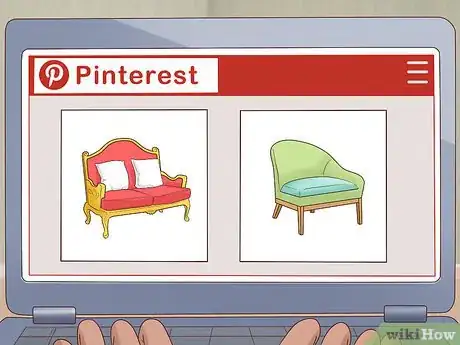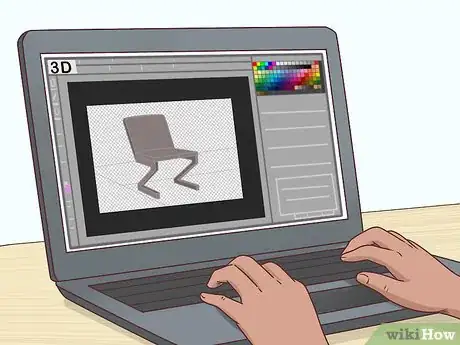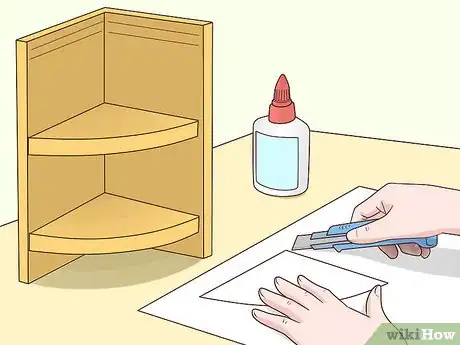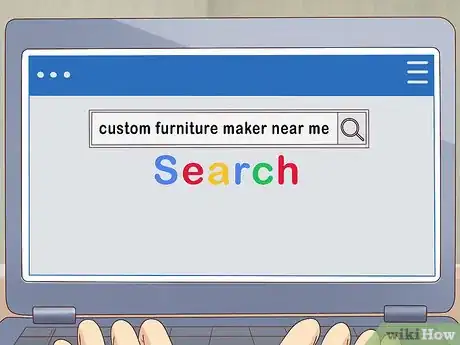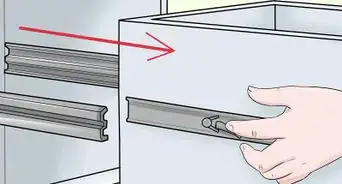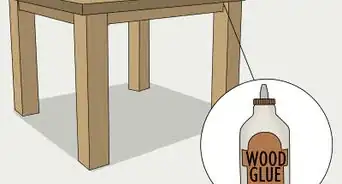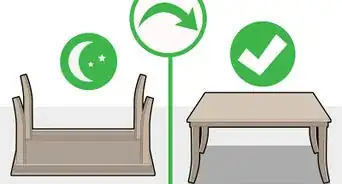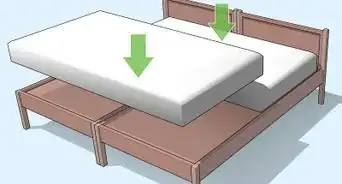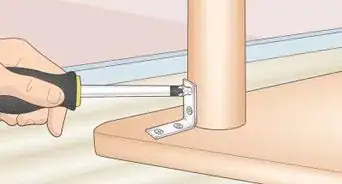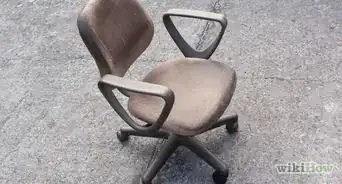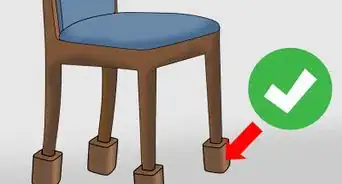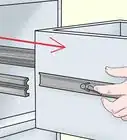This article was co-authored by wikiHow staff writer, Hunter Rising. Hunter Rising is a wikiHow Staff Writer based in Los Angeles. He has more than three years of experience writing for and working with wikiHow. Hunter holds a BFA in Entertainment Design from the University of Wisconsin - Stout and a Minor in English Writing.
This article has been viewed 53,696 times.
Learn more...
Furniture can serve many different purposes, like being versatile or just being comfortable. Whether you want a custom piece for your own home or are trying to solve a design problem, you can easily start designing your own furniture to fit your needs. By first developing a concept and making models, you'll be able to have a functional and custom piece of furniture you can be proud of!
Steps
Developing a Concept
-
1Determine what type of furniture you want to design. Many times, designs are fueled by an existing problem. Consider what problems you have in your own home or place of work to find inspiration for what to design. Keep a log in a notebook of the ideas and problems that arise from your brainstorming.[1]
- For example, if you have a lot of books but live in an area without a lot of space, you may want to design a bookshelf made for small spaces.
-
2List what you want to accomplish with your furniture. Write down the challenges and problems that you want to try and solve with your furniture, like if it needs to be moved easily or if it should have a specific shape. Jot any answers or ideas you have for your furniture currently to keep a running log of your design process.[2]
- For example, you may want to make a bookcase that is versatile for small spaces or a chair with added storage.
- The more specific you are with your list, the better end product you’ll have.
Advertisement -
3Take influences from common objects. Look at items around your home or in nature and see how you can convey them into a furniture design. Write down any objects that catch your eye and sketch tiny thumbnails of how you would turn them into furniture.[3]
- For example, you may take inspiration from a scorpion to make a chair with a tall back.
- You could build a bookshelf based on a tree where the branches hold the books.
-
4Research current furniture designs to get more ideas. Scroll through design websites or look through product magazines to see what’s already on the market. Take note of what you like and dislike about the current designs so you can adapt and change them. This way, you can eliminate any ideas you have that may have already been produced and avoid copying another designer.[4]
- Look at classic works of furniture design as well.
-
5
Making Models of Your Design
-
1Sketch your ideas on paper or in a digital drawing program. Draw your furniture at different angles so you or anyone working off of your plans can tell what it looks like. Start with pencils and then solidify your outlines with pens or fine-tip markers. If you’re working digitally, make the outlines darker and thicker by changing your brush size.[6]
- Get a drawing tablet compatible with your computer to sketch designs digitally.
- Use contour lines to show the form of your furniture. For example, draw curved lines on areas that are rounded or soft.
-
2Write down any callouts or measurements on the drawing. Think about the important information someone would need to know to make your furniture and write those considerations down on the paper. Use common language so anyone is able to understand your drawing.[7]
- For example, if you’re designing a reclining chair, draw a line to the parts and note how it reclines or what controls the action.
-
3Work in 3D-modeling software to visualize your furniture. Start with your furniture’s basic form, like a cube or sphere and work from there. Adjust the form or add more forms for more complicated pieces. Once you’re finished, you can render the model to see what it would look like in a 3D space.[8]
- Free programs like SketchUp or Blender are great ways to try 3D-modeling.
-
4Build scale models of the furniture with simple materials. Scale your models down so 1 ft (30 cm) of your actual furniture design is 3–4 in (7.6–10.2 cm) on your model. Replicate your design physically using craft materials like cardboard or styrofoam. This helps you get an idea of the number of materials you’d need to create a full-sized version of the piece.[9]
- Work at a minimum of ¼ the size of the full-sized design; otherwise, the model may be too small to work on.
Fabricating a Prototype
-
1Purchase the materials you need for your piece. Take the measurements from your models and scale them up so you know how much of the material to purchase. Go to your local hardware and craft stores to get everything you need to make your furniture.[10]
- Don’t forget to buy any specialty tools you need to put your furniture together. Ask your friends or colleagues if they have any tools you could borrow if some of them are out of your price range.
- Buy materials when you need them as opposed to all at once. This way, you’re not spending a lot of money in one trip.
-
2Build a full-sized prototype if you can. Start by building the initial framework for your piece of furniture so it has a sturdy foundation. Keep building onto your furniture until you’re happy with the final piece. Stain or paint the furniture so it looks how you drew or modeled it.[11]
- Only work with products you’re comfortable using.
- Making a piece of furniture could take a long time depending on how often you can work on it. Find a space where you can keep your materials out for a few weeks or months.
-
3Test your furniture for any changes you need to make. Use your furniture consistently to see how it holds up under everyday wear and tear. Check the sturdiness of your product and how much weight it can handle. Make notes on adjustments you want to make to the final design, so that it is more clear when you go to build another piece.[12]
- Expect to make at least 1 change from your prototype to the final design. Once it’s built, there may be areas that you initially overlooked.
-
4Find a custom furniture maker near you if you don’t want to make it yourself. Look online for shops that will build custom furniture and take your designs to them. Explain what you expect out of the designs and ask for a price quote. Once you find a maker that you’re happy with, let them build the piece of furniture for you.[13]
Warnings
- Furniture fabrication can take months to complete. Make sure you build in a space that isn’t disrupted.⧼thumbs_response⧽
- Only work with tools that you’re comfortable or certified to use.⧼thumbs_response⧽
Things You’ll Need
- Pencils
- Markers
- Paper
- Computer
- Building materials
References
- ↑ https://www.homestratosphere.com/design-furniture/
- ↑ https://www.homestratosphere.com/design-furniture/
- ↑ https://freshome.com/2012/03/15/how-to-design-simple-versatile-and-functional-furniture-with-gerard-de-hoop/
- ↑ https://www.homestratosphere.com/design-furniture/
- ↑ https://freshome.com/2012/03/15/how-to-design-simple-versatile-and-functional-furniture-with-gerard-de-hoop/
- ↑ https://www.youtube.com/watch?v=xpE8qy8lOXI
- ↑ https://www.core77.com/posts/25311/A-Better-Way-to-Do-Drawing-Callouts
- ↑ https://youtu.be/ICt3sZYxivk?t=4m15s
- ↑ https://www.homestratosphere.com/design-furniture/




